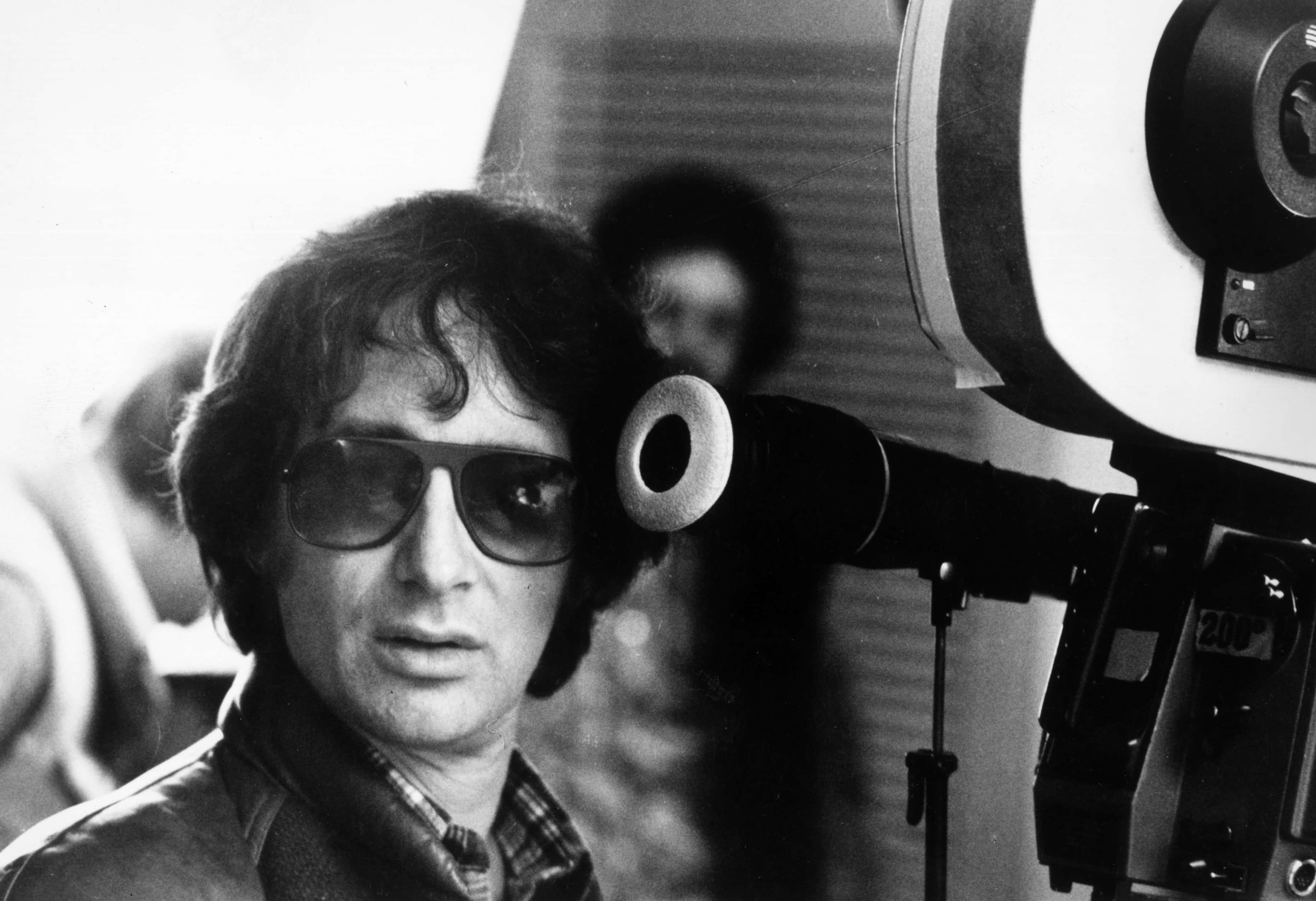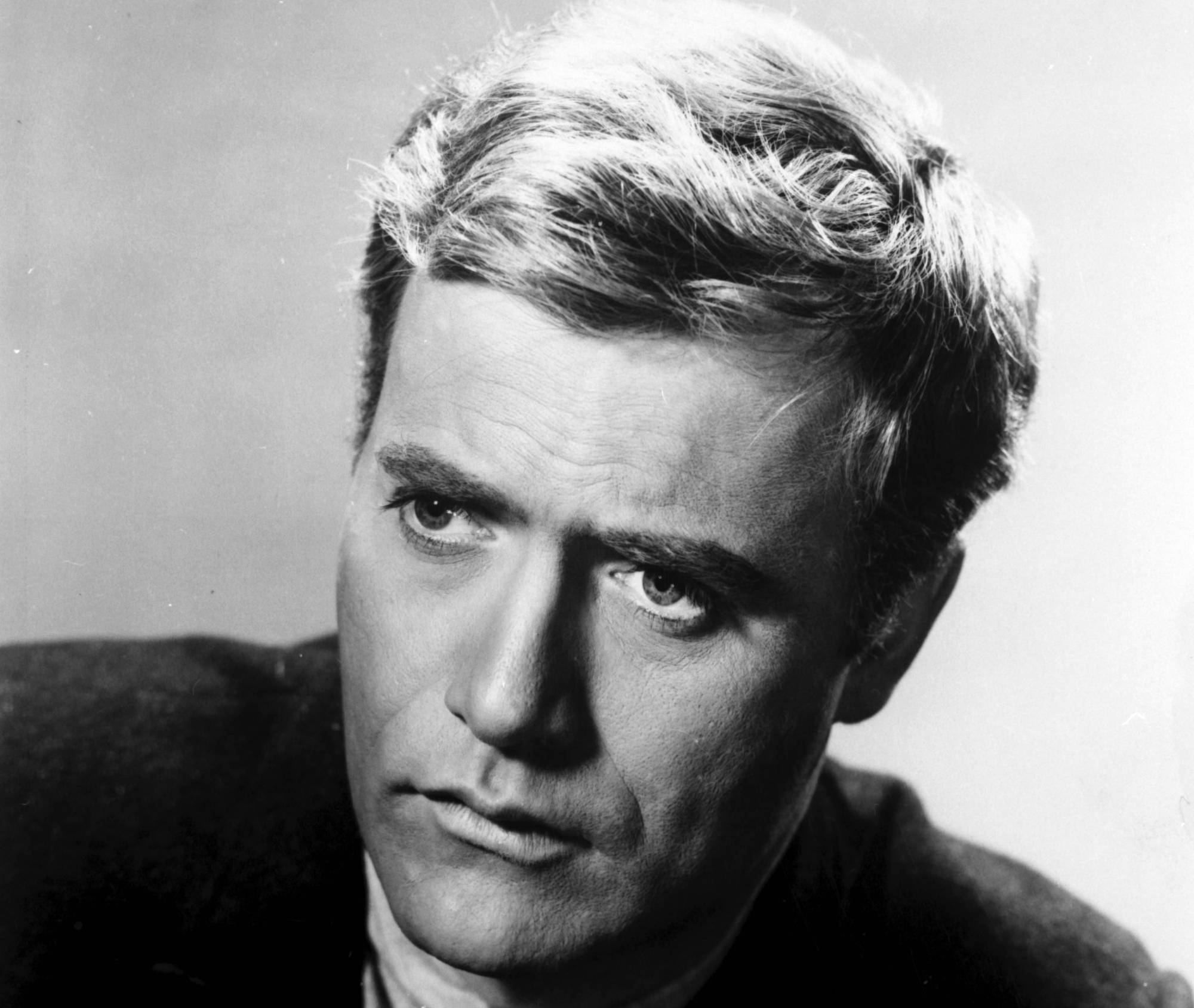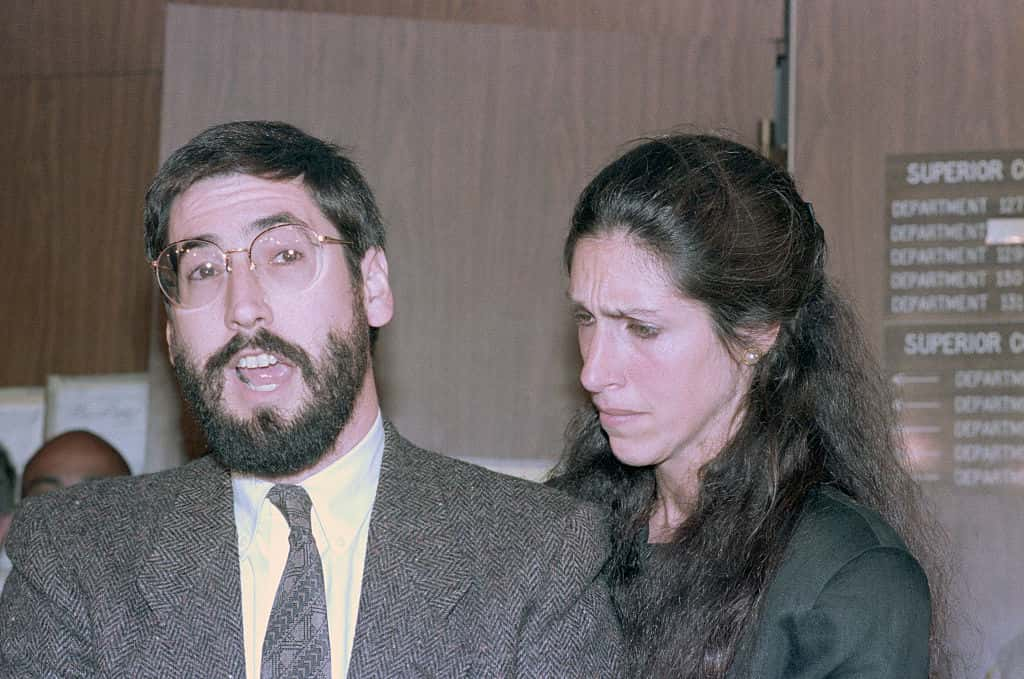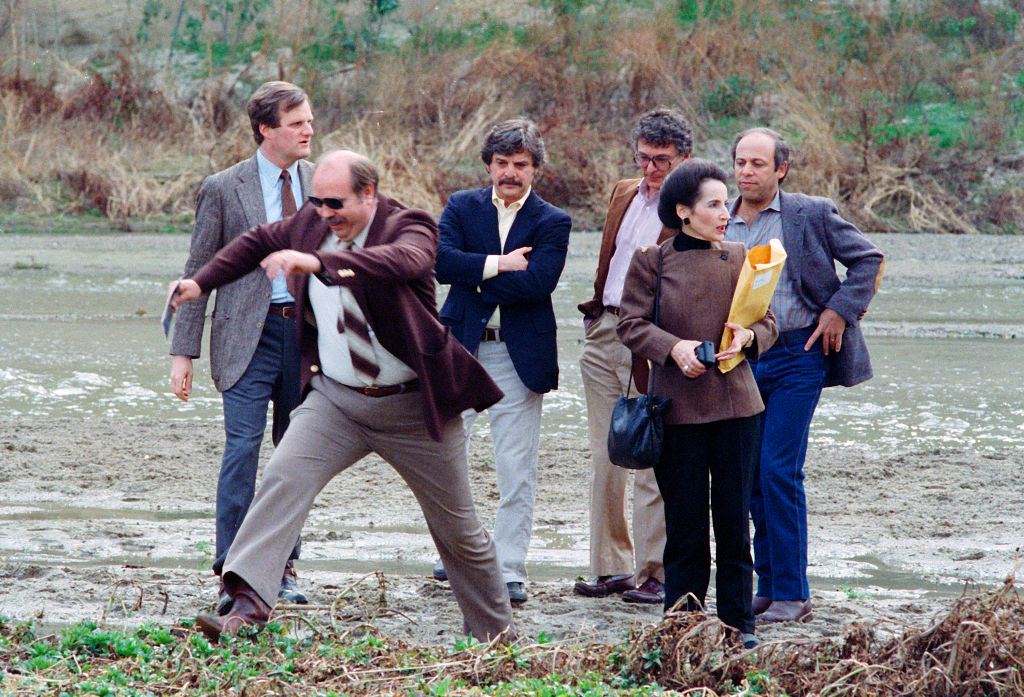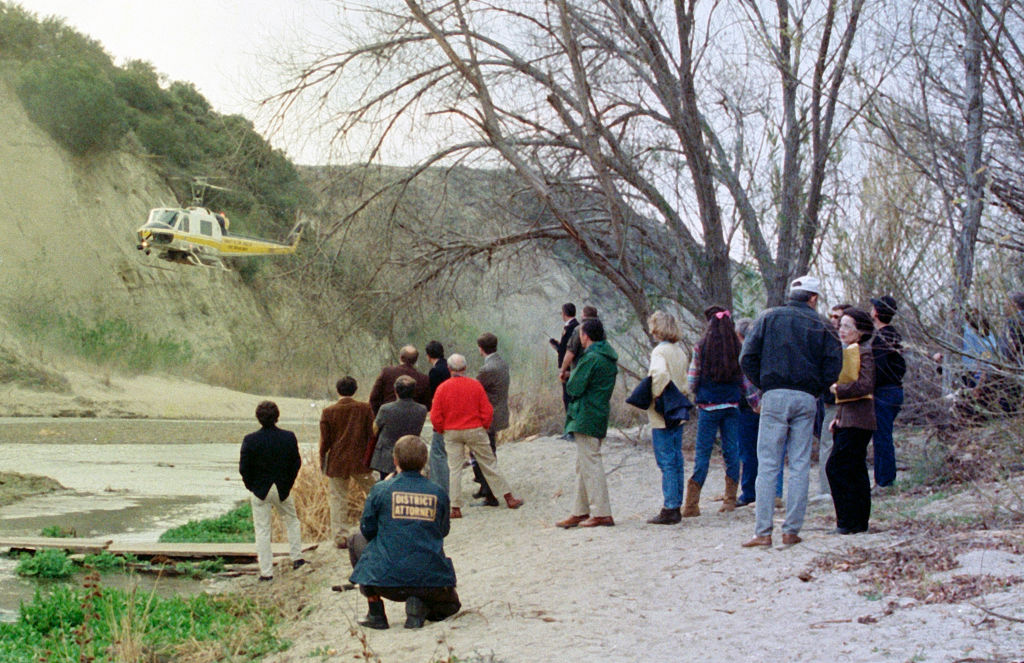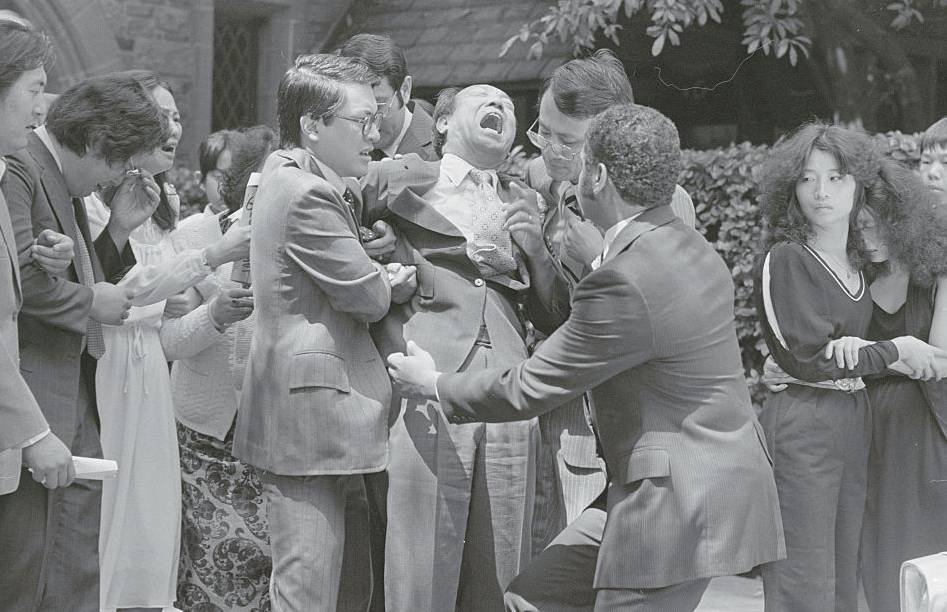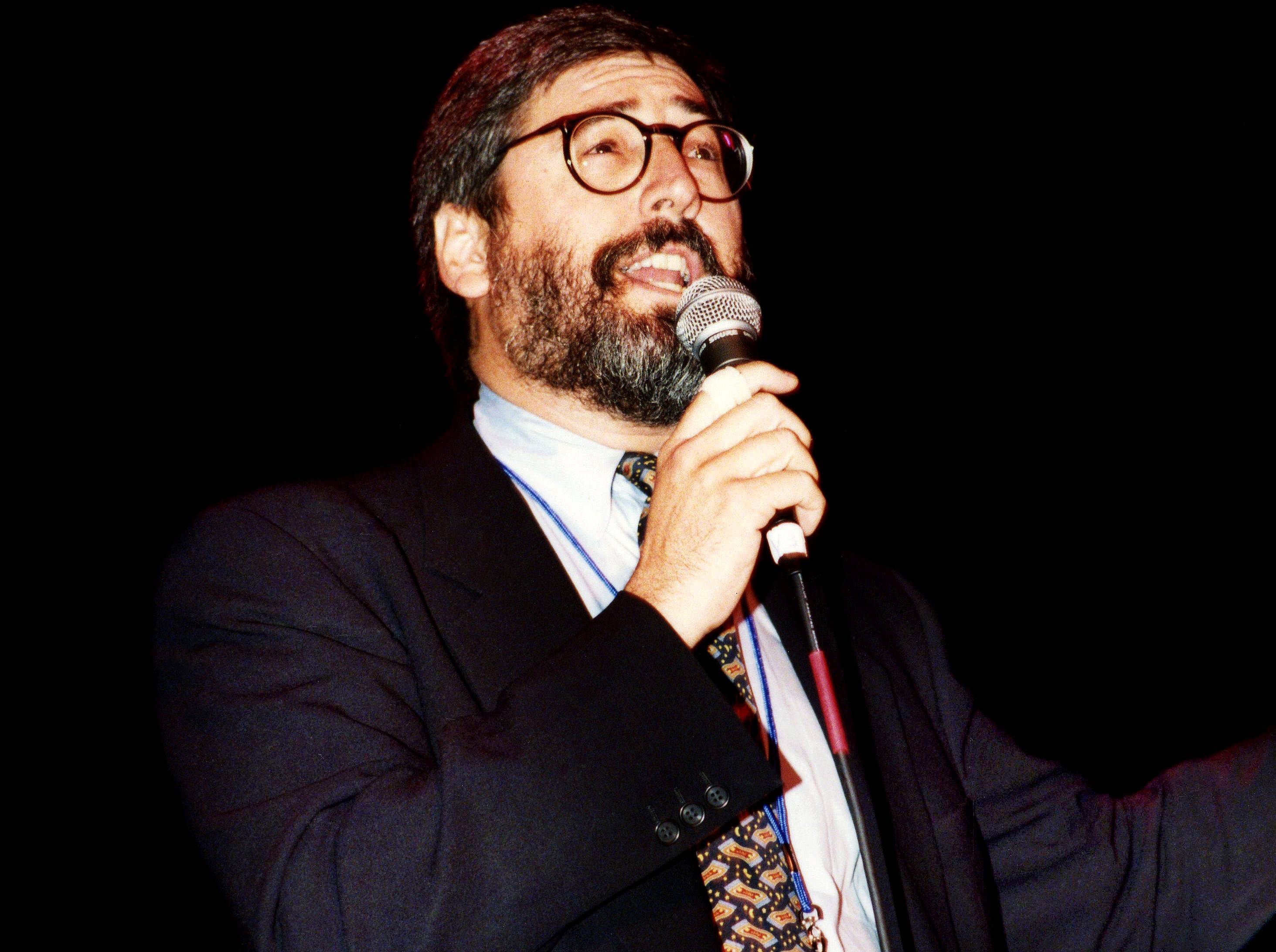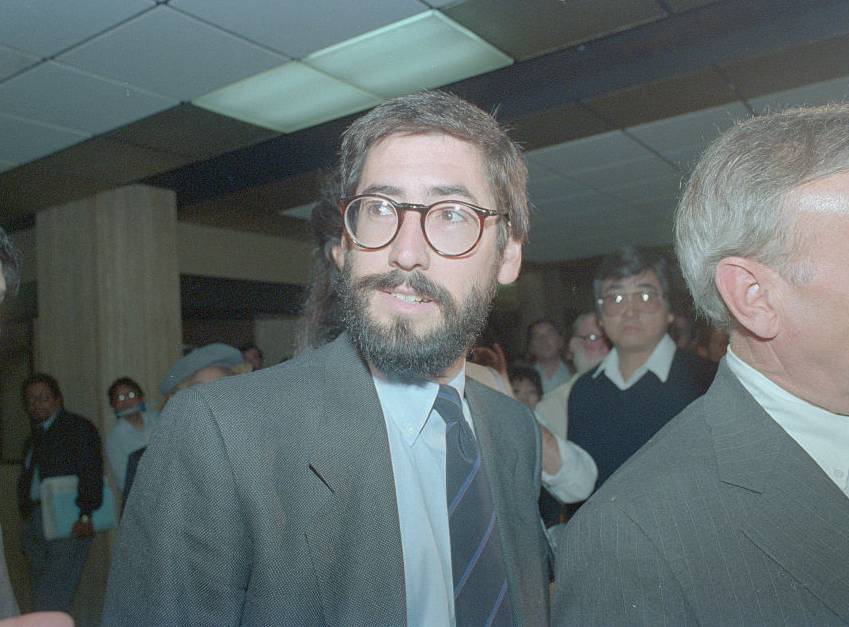A Completely Avoidable Disaster
There have been many on-set accidents in Hollywood history—but none as horrifying as the tragedy that unfolded during the filming of 1983’s Twilight Zone: The Movie.
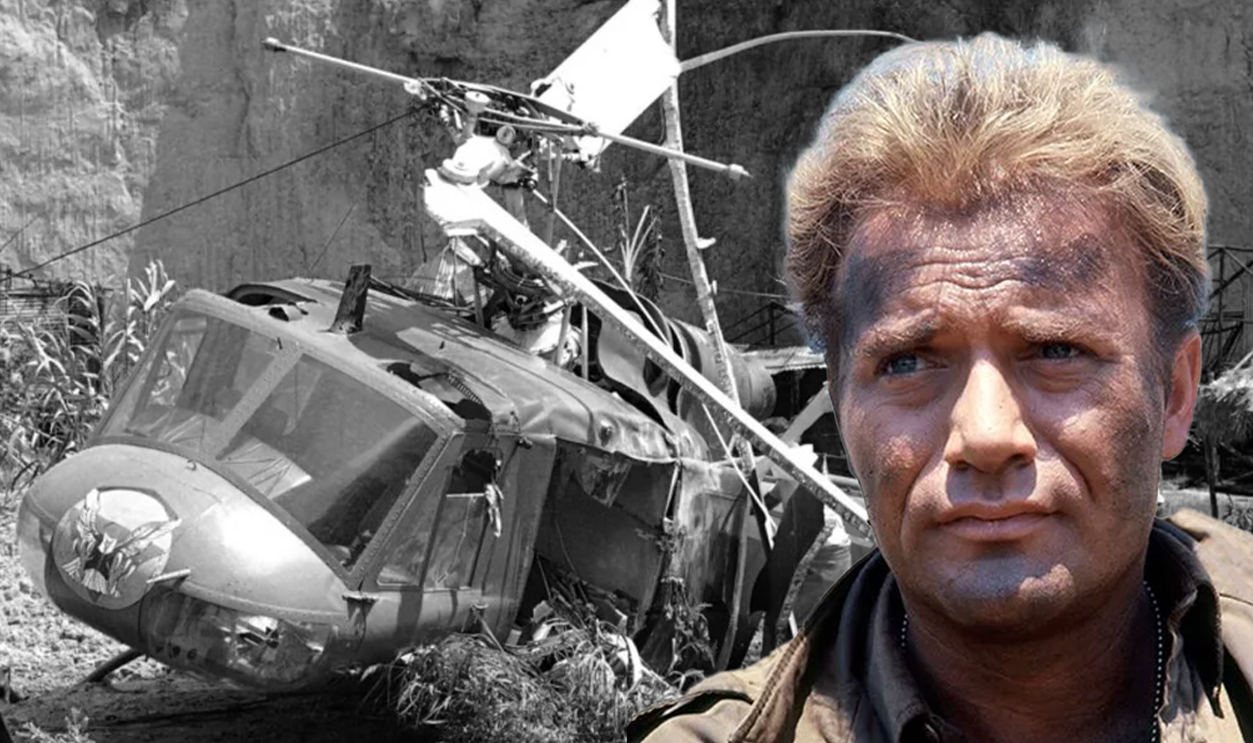
1. Where It Came From
From 1959 to 1964, The Twilight Zone became one of history’s most iconic shows. Presented by Rod Serling, this anthology series told strange and otherworldly stories, often twisted into a life lesson. Nearly 20 years later, a disastrous follow-up took the franchise from beloved to infamous.
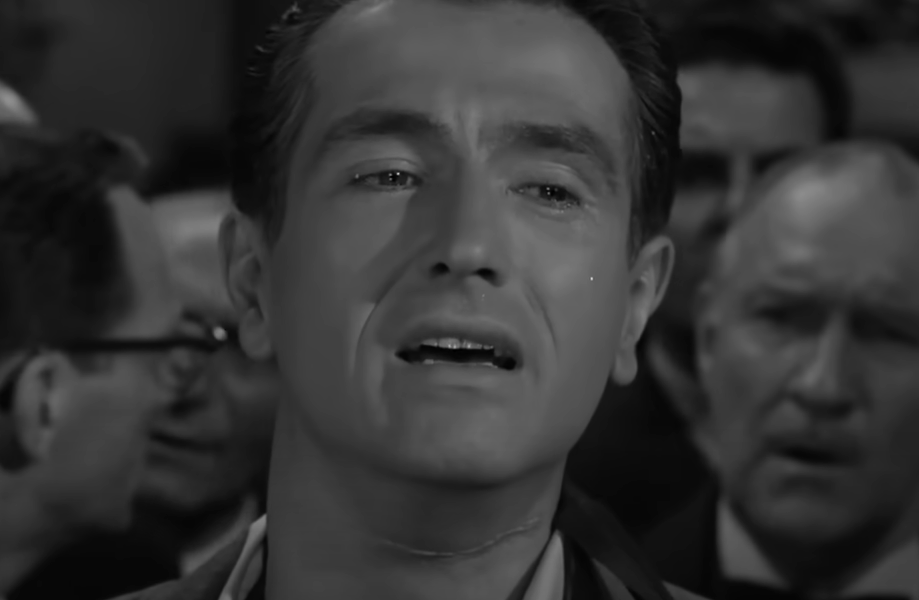 CBS, The Twilight Zone (1959–1964)
CBS, The Twilight Zone (1959–1964)
2. It Became A Movie
In 1983, Warner Bros Pictures released Twilight Zone: The Movie. The initial concept was to turn one of the original show’s episodes into a feature-length film before one of the higher-ups decided to change the format.
Of course, it wasn’t just anyone at the helm.
 Warner Bros., Twilight Zone: The Movie (1983)
Warner Bros., Twilight Zone: The Movie (1983)
3. The Producers Were Experienced
Both movie producers were already big names in Hollywood. John Landis already had The Blues Brothers and Trading Places under his directorial belt. Then Steven Spielberg joined as a producer since he and Landis had loved the series since childhood.
With Spielberg’s addition, the whole layout of the film changed.
4. The Movie Was In Parts
Rather than focus on adapting just one episode from the original series, Steven Spielberg introduced the idea of extending the narrative into multiple stories. Specifically, the film was split into four segments, but it wasn’t just one director overseeing all of them.
5. They Split Up The Directing
With the movie in four segments, the studio chose four directors to cover each. Steven Spielberg and John Landis took two of the segments. For the others, they brought in Joe Dante, who was already working with Spielberg on Gremlins, and Mad Max’s George Miller.
It was during the first segment that everything became disastrous.
6. The Trouble Segment
The concept of the movie’s first segment was initially a retelling of the Twilight Zone episode, “Back There”. Titled “Time Out,” this segment followed a severely bigoted man who was sent back in time to relive some of history’s most notorious racial injustices. But there was one scene that the film turned to tragedy.
 Warner Bros., Twilight Zone: The Movie (1983)
Warner Bros., Twilight Zone: The Movie (1983)
7. How The Scene Was Scripted
In the scene that would eventually lead to catastrophe, the main character would be sent back to the Vietnam War. After landing in a deserted village, he would find two lost children and flee with them from American soldiers pursuing in a helicopter.
Of course, it wasn’t actually filmed in Vietnam—but it was no less safe for the actors.
 Ronald L. Haeberle, Wikimedia Commons
Ronald L. Haeberle, Wikimedia Commons
8. It Was A Famous Location
The outdoor set, made to look like a village in Vietnam, was actually in California. The filmmakers settled on a movie ranch called Indian Dunes which, even aside from this film, saw several productions in that decade, such as The Color Purple and MacGyver.
But they didn’t choose this location based solely on its fame.
 Muse Entertainment, Cursed Films, Twilight Zone: The Movie (2020-22)
Muse Entertainment, Cursed Films, Twilight Zone: The Movie (2020-22)

History's most fascinating stories and darkest secrets, delivered to your inbox daily.
9. It Was A Strategic Location
With such a multi-faceted story, the filmmakers needed a site to fulfill all of their needs. Indian Dunes ended up being perfect, as its diverse terrain could pass off as many locations. Plus, it stood secluded and open enough that city lights weren’t an issue, and it allowed for pyrotechnics.
This made it immensely more dangerous for the child actors involved, but that nearly wasn’t the case.
 Muse Entertainment, Cursed Films, Twilight Zone: The Movie (2020-22)
Muse Entertainment, Cursed Films, Twilight Zone: The Movie (2020-22)
10. The Scene Changed
Many things could have changed to avoid the terrible tragedy to come, one of which was an early decision. Originally, the soldiers chased only the main character—Bill— through Vietnam. However, Bill seemed too irredeemable, so the writers added two Vietnamese orphans for him to rescue.
Speaking of which, it’s important to note all the players involved.
 Warner Bros., Twilight Zone: The Movie (1983)
Warner Bros., Twilight Zone: The Movie (1983)
11. The Actors Involved
There were only three actors for the scene in question, although the two hired children were barely actors. These were six-year-old Renee Shin-Yi Chen and seven-year-old Myca Dinh Le. Vic Morrow played Bill, the protagonist.
For Morrow, this wasn’t his first rodeo.
12. He Was A Veteran Actor
At 53 years old, Vic Morrow was already an accomplished actor. Having nearly 30 years of film and television performance behind him, he was mostly known for his work in Westerns. Regarding his young co-stars, they became involved only by unhappy chance.
13. He Was Approached Out Of Nowhere
The events that led to either child being hired began when a friend approached Peter Wei-Teh Chen. This friend’s wife happened to be the film’s production secretary and was looking for young actors.
Chen had a couple of names in mind.
 Unknown Author, Wikimedia Commons
Unknown Author, Wikimedia Commons
14. His Niece Was Hired
Immediately, when asked if he knew any children who could be in the movie, Peter Wei-Teh Chen thought of his own family. Specifically, he asked his brother and sister-in-law if their daughter, Renee Shin-Yi Chen, could be in the film. The parents agreed, but Renee’s uncle thought of someone else too.
 Muse Entertainment, Cursed Films, Twilight Zone: The Movie (2020-22)
Muse Entertainment, Cursed Films, Twilight Zone: The Movie (2020-22)
15. He Was A Family Friend
Remembering one of his Vietnamese friends, Peter Wei-Teh Chen asked Daniel Le if his son, Myca Dinh Le, would like to be in the movie. Le also agreed, but there was a good chance none of these parents, or Chen, would have gone along with things so readily if they had known just how dangerous the set was.
 Muse Entertainment, Cursed Films, Twilight Zone: The Movie (2020-22)
Muse Entertainment, Cursed Films, Twilight Zone: The Movie (2020-22)
16. He Was Never Told
It may be easy for some to blame the uncle who passed this film’s opportunity along to the children’s parents. However, it’s important to note that Peter Wei-Teh Chen was never given the full scope of the danger they would be in, specifically the explosives used in the scene.
It was these very explosives that were a big reason behind the film’s shady business.
 Muse Entertainment, Cursed Films, Twilight Zone: The Movie (2020-22)
Muse Entertainment, Cursed Films, Twilight Zone: The Movie (2020-22)
17. They Were Hired Illegally
One of the first cards to fall in John Landis’ house of irresponsible actions was his choice to hire children as actors without the proper clearance. He refused to request the necessary permits, knowing that they wouldn’t allow for the dangerous scenes he had in mind.
18. They Weren’t Supposed To Work
By all rights, no one should have allowed Renee and Myca to work in this film. Firstly, they would be filming at night, which required the proper permits. Even more perilous, they would be filming with explosives, which is likely why Landis never attempted to get the waivers.
Furthermore, this meant that he couldn’t treat them like regular actors.
 Muse Entertainment, Cursed Films, Twilight Zone: The Movie (2020-22)
Muse Entertainment, Cursed Films, Twilight Zone: The Movie (2020-22)
19. They Couldn’t Be Paid Properly
As Renee and Myca would be working without the proper authorization, John Landis was operating outside of California’s state laws. Because of this, he had to pay them under the table, which should have been a red flag to those overseeing the production.
20. They Assumed It Was Better Than It Was
Executive Producer Frank Marshall, and Lucy Fisher—an executive for Warner Bros—believed the scene to be too unsafe. Somehow, John Landis convinced them that the children wouldn’t be present in the dangerous stunt and that everything would be up to code.
Lying was just the tip of the iceberg for Landis, though.
 Alan Light, CC BY 2.0, Wikimedia Commons
Alan Light, CC BY 2.0, Wikimedia Commons
21. The Director Was Unstable
Even before the incident, the set was hardly an ideal working environment. John Landis often acted more like a petulant youth than a professional. It wasn’t uncommon for him to devolve into angry fits, screaming and cursing at people when things didn’t go his way.
Sadly, things became even more dangerous.
 Evening Standard, Getty Images
Evening Standard, Getty Images
22. He Took Dangerous Risks
John Landis was seemingly without limits, especially when disregarding safety. One scene called for the destruction of a banana plant, but Landis thought the special effects would take too long. Instead, he ordered the use of guns with live ammo, despite Vic Morrow’s objections.
Still, it wasn’t just the people in charge who were the problem.
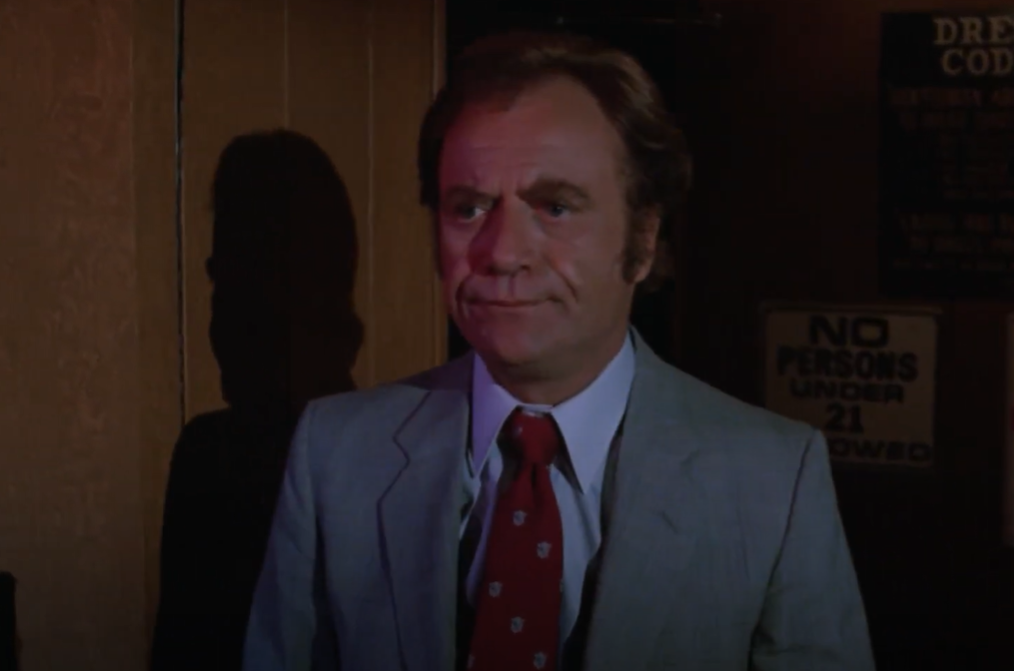 Warner Bros., Twilight Zone: The Movie (1983)
Warner Bros., Twilight Zone: The Movie (1983)
23. There Was An Aircraft Loophole
At the time, many regulations were not in place, one of which may have helped avoid this set’s recklessness. While there were rules around using aircraft in film, they were only needed for “fixed-wing aircraft” and did not cover helicopters.
Speaking of the helicopter, it wasn’t just anyone piloting it.
24. The Pilot Was A Veteran
The pilot of the helicopter for the scene had more of a connection to this segment than you may expect. The filmmakers chose Darcey Wingo to take the helm of the airborne stunt, which as fate would have it, brought him back to a familiar setting as he was an actual Vietnam veteran.
While he had much of the necessary experience and knowledge, a few others were kept completely in the dark.
 Muse Entertainment, Cursed Films, Twilight Zone: The Movie (2020-22)
Muse Entertainment, Cursed Films, Twilight Zone: The Movie (2020-22)
25. The Parents Were Silenced
On the day the stunt took place, the parents of Renee and Myca visited the set, but seeing the dangerous components, they were understandably nervous. However, associate producer George Folsey Jr ordered them not to tell any firemen about the stunt and hid them from the safety officer.
Then the whole thing turned to calamity.
26. It Was Way Too Low
As the scene played out, Vic Morrow carried the children through the village and surrounding terrain, while Darcey Wingo flew the helicopter after them. The stunt had already become unsafe, as the helicopter descended to a low 25 feet above the ground.
Unfortunately, this started a devastating chain of events.
 Muse Entertainment, Cursed Films, Twilight Zone: The Movie (2020-22)
Muse Entertainment, Cursed Films, Twilight Zone: The Movie (2020-22)
27. The Effects Went Off
Placed to simulate explosions and gunfire, production had littered various effect riggings around the set. One of the special effects mortars went off while the helicopter’s tail was hovering above it, damaging the tail’s rotor.
Destruction quickly followed.
 Muse Entertainment, Cursed Films, Twilight Zone: The Movie (2020-22)
Muse Entertainment, Cursed Films, Twilight Zone: The Movie (2020-22)
28. The Helicopter Went Down
With a damaged tail rotor, and already flying recklessly among the explosions, the helicopter spun out and crashed into the river where Vic Morrow and the two children were standing. While Morrow had tried to act, the aircraft crushed all three before he could.
Tragically, the failed stunt exacted a much heavier toll than it was worth.
29. There Were Injuries And Casualties
While nobody involved in the crash walked away unscathed, some didn’t walk away at all. Darcey Wingo had five passengers including camera operators Randall Robinson and Stephen Lydecker, all of whom sustained injuries. More horrifically, Vic Morrow, Renee Shin-Yi Chen, and Myca Dinh Le all perished instantly.
Amid everything, one person did attempt to save them.
 Los Angeles Times, Getty Images
Los Angeles Times, Getty Images
30. He Tried To Help
While many others panicked, Executive Producer Frank Marshall maintained his composure and jumped into the water to try and help. Returning to the surface, he had retrieved Renee’s body, as she had already perished.
Not everyone in charge was as active.
 Muse Entertainment, Cursed Films, Twilight Zone: The Movie (2020-22)
Muse Entertainment, Cursed Films, Twilight Zone: The Movie (2020-22)
31. He Was In Shock
As chaos ensued, John Landis stood frozen in a state of shock, chillingly calling out, “That's a wrap, everybody go home”. Some even went on to report that he tried to hide any film magazines that might implicate him in the crash.
32. It Was A Media Sensation
As the investigation and trial took place following the disaster, news outlets scrambled to keep up. The media hounded both the families of the victims and the ones tasked with overseeing the film’s production as they went through the legal proceedings.
Of course, some were better off than others.
 Muse Entertainment, Cursed Films, Twilight Zone: The Movie (2020-22)
Muse Entertainment, Cursed Films, Twilight Zone: The Movie (2020-22)
33. The Company Supported Some
As everyone involved underwent the trial, Warner Bros made its priorities plain regarding its employees. The studio legally supported many of the higher-ups, but this wasn’t the case with everyone.
 Muse Entertainment, Cursed Films, Twilight Zone: The Movie (2020-22)
Muse Entertainment, Cursed Films, Twilight Zone: The Movie (2020-22)
34. Others Were Left Alone
While Warner Bros provided legal resources for its high-ranking employees, the ones on the lower rungs weren’t so lucky. In particular, employees like the helicopter pilot—Darcey Wingo—were left to fend for themselves.
Thus began the near-endless procession of blame and buck-passing.
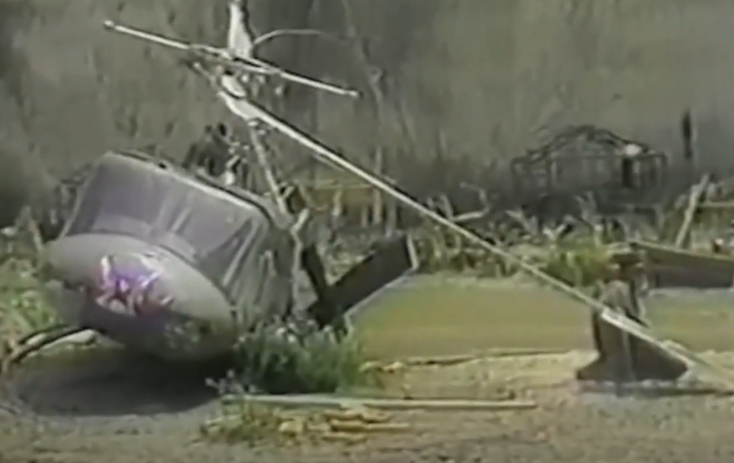 Muse Entertainment, Cursed Films, Twilight Zone: The Movie (2020-22)
Muse Entertainment, Cursed Films, Twilight Zone: The Movie (2020-22)
35. He Testified Against The Director
One of the assistant cameramen on the helicopter, Randall Robinson, was quick to testify against John Landis. According to him, a production manager told Darcey Wingo to pull back, believing they were hovering too low. However, this didn’t satisfy Landis, who ordered them to keep going lower.
Even before that, others had tried to speak up.
36. He Had Been Warned
Another cameraman on board the helicopter also had something to say about John Landis’ recklessness. Stephen Lydecker testified that others had warned the director of the risks, but Landis always ignored them.
Naturally, Landis had a few words in rebuttal.
37. He Denied Everything
All the details of John Landis’ carelessness were coming out, but he wasn’t one for taking responsibility. While he acknowledged that hiring the two children was “wrong,” he categorically denied any fault in the incident.
Fortunately, the families of the victims were able to make their side of things known.
 Los Angeles Times, Getty Images
Los Angeles Times, Getty Images
38. The Father Testified
Among those in the trial seeking justice, the father of Myca Dinh Le was able to say his piece. Corroborating the testimonies of Randall Robinson and other witnesses, Daniel Le stated that he heard John Landis order the helicopter to go lower when it was unsafe.
Adding to his loss, Le also had to relive trauma during the incident.
39. He Was Also A Veteran
Darcey Wingo wasn’t the only veteran on set that day. Myca’s father, Daniel Le, had also survived the conflict in Vietnam. He stated that the chaotic incident took him back to the carnage he had already experienced and the horrors he witnessed.
But the parents hadn’t finished with their testimony.
 PH2 Phil Eggman, Wikimedia Commons
PH2 Phil Eggman, Wikimedia Commons
40. Nobody Knew The Risks
Even though Renee’s uncle was in the dark, surely the filmmakers should have told the children’s parents about the scene. In court, the parents stated that the filmmakers had assured them of no danger. They hadn’t known about the helicopter or explosives until they were on set that day.
Even with these testimonies, however, others tried to shirk responsibility.
41. He Pushed The Blame Around
In a shocking statement, Darcey Wingo seemingly implied the fault of one of the victims. Recalling that Vic Morrow wasn’t looking up at the helicopter as instructed, the pilot asserted that Morrow had about five seconds which he could have escaped in before the crash.
Thankfully, his statement was quickly refuted.
 Muse Entertainment, Cursed Films, Twilight Zone: The Movie (2020-22)
Muse Entertainment, Cursed Films, Twilight Zone: The Movie (2020-22)
42. The Prosecution Pushed Back
Deputy DA Lea Purwin D'Agostino immediately disputed Darcey Wingo’s suggestion that Vic Morrow had any chance of avoiding the crash. D’Agostino simply asked how Morrow could have realistically done so with two children in knee-deep water, and a low-flying helicopter plummeting towards him.
Wingo’s implication was largely dismissed, but that was nowhere near the end of the trial.
43. It Lasted A Long Time
As if the families of the victims hadn’t suffered enough, the legal proceedings were neither easy nor quick. Even the initial trial lasted 10 months, in which five people received charges of manslaughter, including John Landis, George Folsey Jr, and Darcey Wingo.
Disappointingly, some people sided with Landis.
44. There Was Support For Him
Despite many testimonies against the brash and negligent actions of John Landis, some high-profile people didn’t see it that way. A collection of big names in directing penned an open letter of support for Landis, including Francis Ford Coppola and Sidney Lumet.
Unfortunately, this may have worked.
 American Zoetrope, Hearts of Darkness: A Filmmaker's Apocalypse (1991)
American Zoetrope, Hearts of Darkness: A Filmmaker's Apocalypse (1991)
45. They Were Let Off
After a lengthy trial, the families of the victims sadly did not find justice. In 1987, the court acquitted everyone who carried charges of manslaughter, including John Landis and production manager Dan Allingham.
Then Landis and Allingham just had to make things worse.
 Muse Entertainment, Cursed Films, Twilight Zone: The Movie (2020-22)
Muse Entertainment, Cursed Films, Twilight Zone: The Movie (2020-22)
46. He Was In The Finished Product
Whether insensitive or not, John Landis decided to keep Vic Morrow’s footage in the movie. His scenes were obviously edited at the end, but Landis stated that it didn’t change the overall segment and that it would have been “outrageous” to cut Morrow out of the film.
Fortunately, the filmmakers demonstrated a bit of decency.
 Warner Bros., Twilight Zone: The Movie (1983)
Warner Bros., Twilight Zone: The Movie (1983)
47. Their Scenes Were Unused
Possibly out of a surprising bit of humanity, the filmmakers cut a large portion of the segment. As scripted, the children were to travel with Vic Morrow’s character before being captured. Instead, after everything, John Landis excluded all of the scenes with Renee and Myca.
Amidst all of this, the rest of the film still felt the effects.
48. The Others Were On Their Own
When it came to the rest of the film, the tragedy and publicity of the situation bled into every aspect of production. Because association with the project was so disdained, the directors of the other segments were left with little to no oversight.
The film was on the brink of being scrapped entirely.
 Warner Bros., Twilight Zone: The Movie (1983)
Warner Bros., Twilight Zone: The Movie (1983)
49. It Would Have Been Shut Down
With the notoriety that the film was getting, Warner Bros was close to canning the entire project. However, according to director Joe Dante, the studio wanted the merit of having a Steven Spielberg picture. So, since Spielberg was still involved, they chose to move forward.
Still, they didn’t come out scot-free.
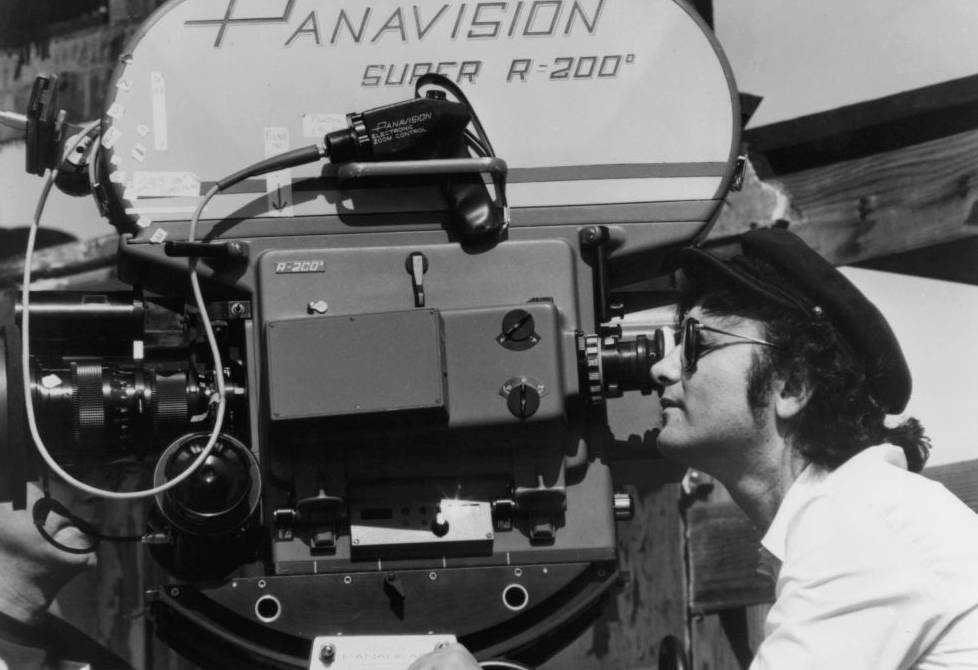 Michael Ochs Archives, Getty Images
Michael Ochs Archives, Getty Images
50. They Were Fined
Both the studio and the people indicted were still forced to pay fines for violating labor laws. When all was said and done, they paid a total of $20,000 to the State Labor Commissioner. But they weren’t only forced to pay the Commissioner.
51. His Family Sued
After the trial, the families of the victims still struggled for restitution. The daughters of Vic Morrow fought Warner Bros and others in various lawsuits. Despite finding no justice in the initial trial, they were able to demand some form of recompense.
 ?LiAnG?, CC BY 2.0, Wikimedia Commons
?LiAnG?, CC BY 2.0, Wikimedia Commons
52. They Eventually Settled
Finally, after years of litigation between Vic Morrow’s daughters and the parties involved, those wronged found some justice. Settling out-of-court, Warner Bros awarded each of the daughters $850,000.
Thankfully, they weren’t the only ones awarded reparations.
53. The Children’s Families Sued
After being lied to, kept in the dark, silenced, and ignored, the families of Renee Shin-Yi Chen and Myca Dinh Le also received restitution. In another out-of-court settlement, the two families’ civil lawsuits awarded them $2 million each.
Even though this was the end of these particular legal troubles, John Landis’ name still went down in history.
54. He Was A First In Cinema
When taking into account all of the accidents, injuries, and disasters on film sets, this sadly wasn’t the first stunt gone wrong. However, the months of initial legal proceedings led to John Landis being history’s first director charged for an on-set fatality.
Later in life, Landis had a few things to say about the situation.
 Rick Meyer, CC BY 4.0, Wikimedia Commons
Rick Meyer, CC BY 4.0, Wikimedia Commons
55. He Reflected On It
After over a decade since the incident, most people might have found a bit of perspective or accountability, but not John Landis. In a 1996 interview, he spoke only about how the tragedy affected him. He mentioned how hard the whole thing impacted his career, and how he believed he would never recover.
Needless to say, this wasn’t the case.
56. His Career Barely Suffered
John Landis lamented that the fatal stunt would be detrimental to his career—which couldn’t be farther from the truth. Even between the incident and that 1996 interview, he directed such successes as Coming to America, Three Amigos!, and the Thriller music video.
Conversely, other people involved with the film had some integrity.
57. He Used A Pseudonym
Not everyone was as satisfied as John Landis and other producers. Andy House, the second assistant director, officially removed his name from the film’s credits. Instead, he used the name Alan Smithee—a pseudonym filmmakers use when they mean to disown a project.
In a different case, one of the other filmmakers quit completely.
 Muse Entertainment, Cursed Films, Twilight Zone: The Movie (2020-22)
Muse Entertainment, Cursed Films, Twilight Zone: The Movie (2020-22)
58. He Abandoned The Film
Even the other directors couldn’t maintain the passion they originally had. George Miller was so disgusted by the incident and everything that followed, that he left abruptly and without a word before post-production was finished. Co-director Joe Dante supervised in his place.
While others finished the film, they drew a line in the sand after.
59. Their Friendship Was Over
Steven Spielberg reportedly lost any emotional investment in the film and, after he finished, burned that bridge. Having been disappointed and sickened by the situation and John Landis’ handling of it, Spielberg cut ties with Landis, both as friends and peers.
He also grew extremely vocal about change in the industry.
 Gage Skidmore, CC BY-SA 3.0, Wikimedia Commons
Gage Skidmore, CC BY-SA 3.0, Wikimedia Commons
60. He Called For Reform
Seeing the larger issue at hand, Steven Spielberg made a statement on the changes that needed to happen. He criticized the norm of directors and producers having complete control and commended the courage of anyone speaking up when they felt unsafe.
As it happened, things did start to improve.
 Martin Kraft, CC BY-SA 4.0, Wikimedia Commons
Martin Kraft, CC BY-SA 4.0, Wikimedia Commons
61. The Law Started To Change
In response to the many calls for change, Hollywood introduced new laws and regulations. For instance, aircraft permits extended to helicopters, and the Director’s Guild of America’s new safety committee was the first in Hollywood to formally issue safety guidelines.
Considering their recent legal troubles, one studio was quick to oblige.
 raindog808, CC BY 2.0, Wikimedia Commons
raindog808, CC BY 2.0, Wikimedia Commons
62. The Company Cooperated
To their credit, Warner Bros almost immediately began revising their protocols and regulations to make things safer. Beyond forming committees to oversee and uphold the safety of film sets, they started regularly posting bulletins that outlined the new standards.
However, they weren’t the only ones to introduce a new resource.
 Coolcaesar, CC BY-SA 4.0, Wikimedia Commons
Coolcaesar, CC BY-SA 4.0, Wikimedia Commons
63. A New Initiative Was Established
The state of California also heeded the wake-up call and made its own changes. Five years after the incident, the Office of the State Fire Marshal created the Motion Picture & Entertainment Safety Program to supervise future uses of pyrotechnic effects in productions.
But certain organizations didn’t just call for action—they ensured accountability.
 Unknown Author, Wikimedia Commons
Unknown Author, Wikimedia Commons
64. They Introduced Consequences
Rather than simply introduce guidelines and leave them as suggestions, the Director’s Guild of America made sure there were ramifications. Before the incident, the guild didn’t have any disciplinary measures for members who ignored or broke safety protocols, but this was quick to change.
Thankfully, resources for everyone were then made readily available.
 Mike Dillon, CC BY-SA 3.0, Wikimedia Commons
Mike Dillon, CC BY-SA 3.0, Wikimedia Commons
65. Hotlines Were Created
Beyond consequences for flouting safety protocols, organizations provided resources for those trying to follow them. Both the Director’s Guild of America and the Screen Actor’s Guild set up hotlines for directors inquiring about safety protocols and actors reporting unsafe environments respectively.
Had these things been in place during the filming of Twilight Zone: The Movie, this disaster might not have happened, and Vic Morrow’s haunting prediction would not have come to pass.
 Warner Bros., Twilight Zone: The Movie (1983)
Warner Bros., Twilight Zone: The Movie (1983)
66. They Showed Up Uninvited
While the families of the victims did get some justice, there was still one last insult to injury before it was all said and done. In a move of such egotistical callousness, John Landis and Dan Allingham disregarded the privacy of one victim’s family. Although unwanted, the two showed up at Vic Morrow’s funeral, shocking and outraging the late star’s family.
But they went even further than refusing to leave.
 Muse Entertainment, Cursed Films, Twilight Zone: The Movie (2020-22)
Muse Entertainment, Cursed Films, Twilight Zone: The Movie (2020-22)
67. He Spoke Against Everyone’s Wishes
Rather than give the late Vic Morrow and his family the proper respect, John Landis made himself the center of attention. Ignoring everyone’s objections, Landis insisted on giving a eulogy, saying that Morrow had thanked him shortly before the incident, and would live on in film.
Of course, now that it was too late, Landis was true to his word.
68. The Original Line
In the original scene, Vic Morrow’s character was scripted to rescue the children and protect them. In a cruel ironic twist, the script called for his character to tell the children that he would keep them safe.
While this adds another layer of tragedy, some of Morrow’s actual last words are even more haunting.
 Warner Bros., Twilight Zone: The Movie (1983)
Warner Bros., Twilight Zone: The Movie (1983)
69. His Last Words
Before the failed stunt took place, even Vic Morrow doubted his safety. In some of his last words to a production assistant, he stated that he should have asked for a stunt double, and eerily joked that this stunt would likely be fatal. But that wasn't the first time he predicted the tragedy that was to come.
 Warner Bros., Twilight Zone: The Movie (1983)
Warner Bros., Twilight Zone: The Movie (1983)
70. He Had A Premonition
Years before Twilight Zone: The Movie, Vic Morrow made a disturbingly accurate prediction. While filming a movie in 1973, Morrow dreaded flying in a helicopter and took out a sizable life insurance policy before doing it. According to him, he always had a “premonition” that a helicopter crash would be the end of him. Sadly, he was right.
 Silver Screen Collection, Getty Images
Silver Screen Collection, Getty Images



